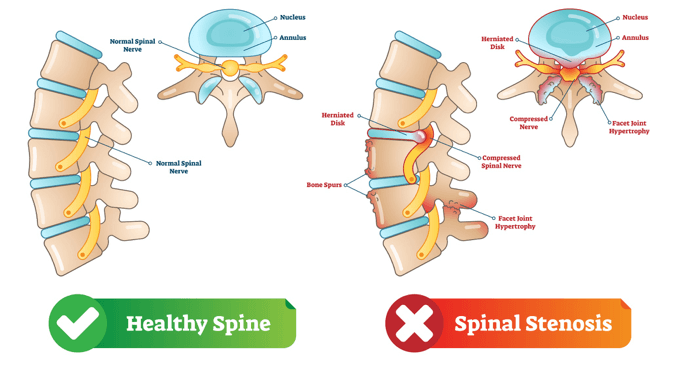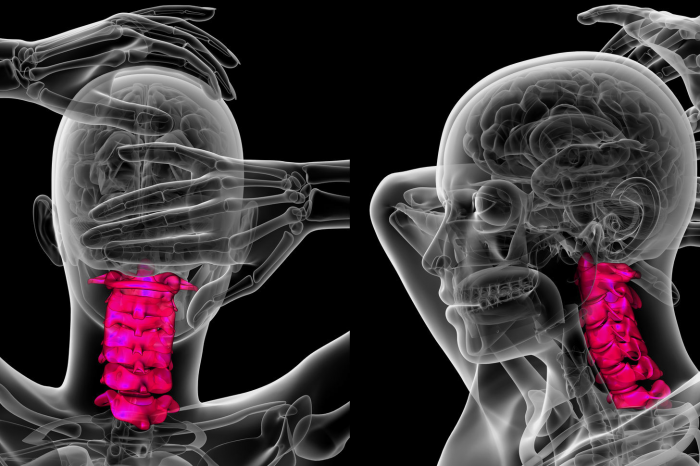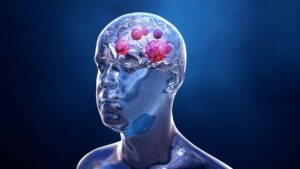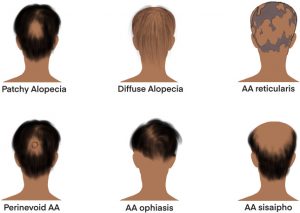Cervical Spinal Stenosis

Cervical Spinal Stenosis Information: Definition, Causes, Symptoms and Treatments Options
What is Cervical Neck Stenosis?
Cervical stenosis is a state in which the spine canal is too little for the spinal cord and nerve roots. Spine stenosis is the narrowing of the spinal canal in the neck area or upper part of the spine is a common cause of neck pain, especially in older patients. This can become the reason of cause of spinal cord damage, this situation called myelopathy, or pinch nerves as they exit the spinal canal (radiculopathy). Occasionally, injure of the spinal cord and nerve roots may happen, resulting in a state entitled myeloradiculopathy.
This tight place make pressure on the spinal cord. While some patients are born with this narrowing, most cases of spinal stenosis arise to patients after the age of 50. Many patients with pain of cervical stenosis have the past of some type of injury or suffering to the neck, however this pain may have came about many months before the beginning of cervical neck stenosis symptoms.
In condition of neck cervical canal stenosis, the canal narrows and can squeeze and compress the nerve roots where they leave the spinal cord spine can change how the spinal cord functions and causer to stiffness, pain, and numbness in the neck, arms, and legs.
Cervical Spine Anatomy
Anatomy of cervical spine will help you to understand best treatment options of Cervical neck stenosis problem. As we know the spine is one of the most important parts of your body. Without it, you are not able to keep yourself upright or even stand up. Cervical spine gives your body structure and support. It helps you to move about freely and to bend with flexibility.
Neck Cervical Stenosis Symptoms
These are the symptoms of cervical stenosis neck pain are:
- Neck pain
- Feeling Pain, weakness, or numbness in the shoulders, arms, and legs.
- Hand clumsiness and balance disturbances.
- Burning sensations and itching in arm or leg.
- Advanced stages of cervical stenosis, problems with bowel and bladder function can result.
- difficulty in walking
Cervical Spinal Stenosis diagnosis
Good treatment is always depends on an accurate diagnosis. The comprehensive diagnostic process for cervical neck stenosis includes:
- Diagnosis of cervical neck canal stenosis usually related to your past of symptoms and a physical exam or what treatments you have already tried.
- In Spinal Stenosis Diagnostic tests. Usually, doctors used X-rays, magnetic resonance imaging (MRI), and computed tomography (CT) scans techniques.
Cervical Neck Stenosis Treatments Options
Spinal Stenosis non-surgical Treatment:
These treatments can relax tight muscles and ease pain or discomfort. use of heat or ice packs, ultrasound, electrical stimulation, and massage are part of Nonsurgical treatments.
Most cases of cervical neck stenosis are successfully treated with non-surgical techniques such as pain and anti-inflammatory medications. Depending on the extent of nerve involvement, some patients may need to temporarily restrict their activities and wear a cervical collar or neck brace for a time. However, most patients only need to rest for a brief time. Physical therapy exercises will also be prescribed to help strengthen and stabilize the neck as well as build endurance and increase flexibility.
- Medications: Medications to relieve pain and reduce inflammation are utillised.
- Medicines: Analgesics include pain relievers such as paracetamol and codeine. Non-steroidal anti-inflammatory drugs (NSAIDS) include aspirin, ibuprofin and naproxen, and these relieve pain as well as reducing inflammation and swelling. Other pharmacological agents include a short course of corticosteroids (prednisolone, cortisone), as well as agents specific for nerve pain (such as pregabalin).
- Chiropractic
- Physiotherapy
- Acupuncture
- Osteopathy
Cervical Neck Stenosis Surgery:
Your doctor may recommend surgery to treat your stenosis. There are a number of surgical techniques that can be used to treat this condition. The goal of each of these surgical decompression treatments is to widen the spinal canal and relieve the pressure on the spinal cord by removing or trimming whatever is causing the compression. However, since all surgical procedures carry a certain amount of risk, your doctor will discuss all of your options with you before deciding which procedure is best for you.
- Decompressive laminectomy: In which the laminae (roof) of the vertebrae are removed, creating more space in the spinal canal for the nerves. most common type of surgery done to treat spine stenosis.
- Posterior laminoplasty: This technique helps to retain spinal stability while also expanding the spinal canal.
Lumbar spinal stenosis surgery: The most commonly conducted treatment, followed by surgery for cervical neck spinal stenosis.






